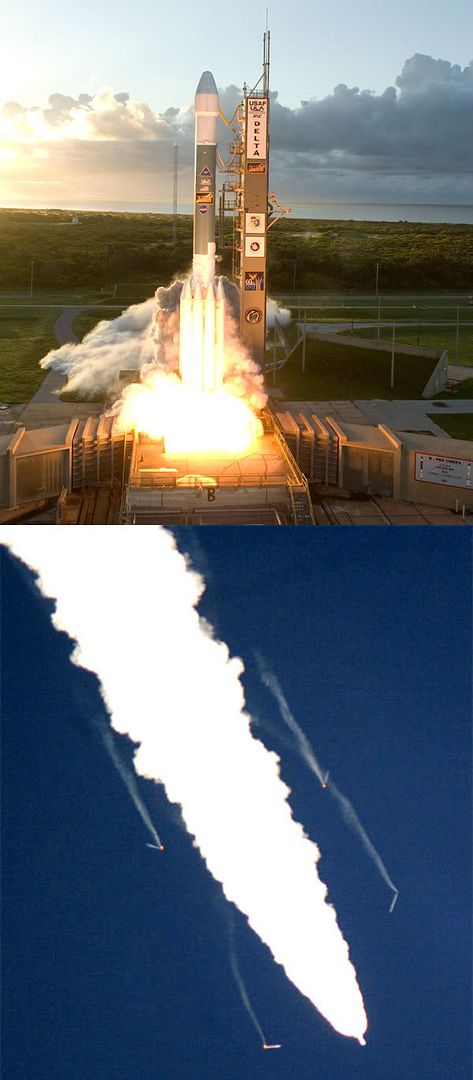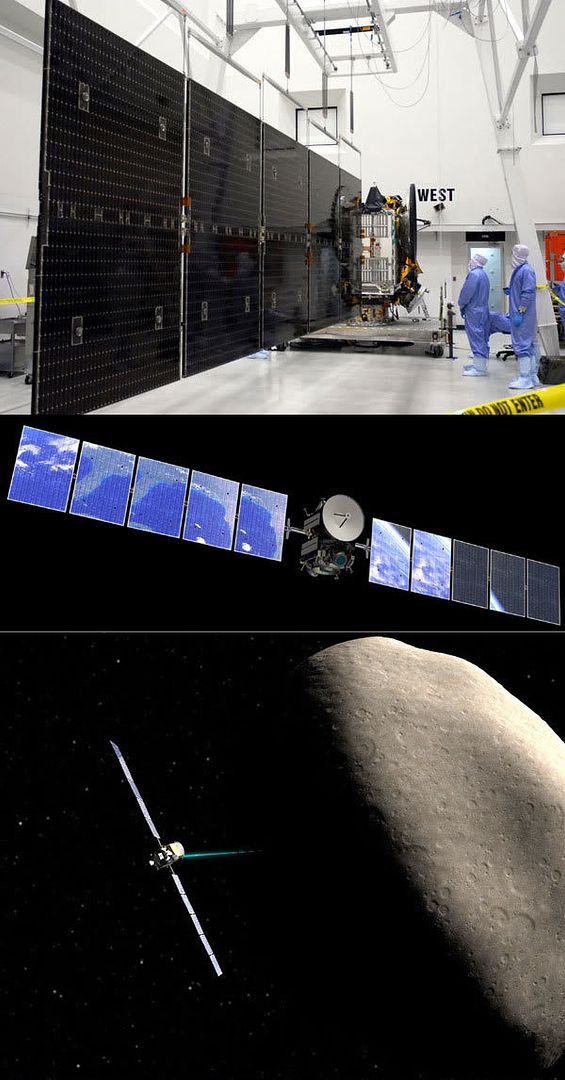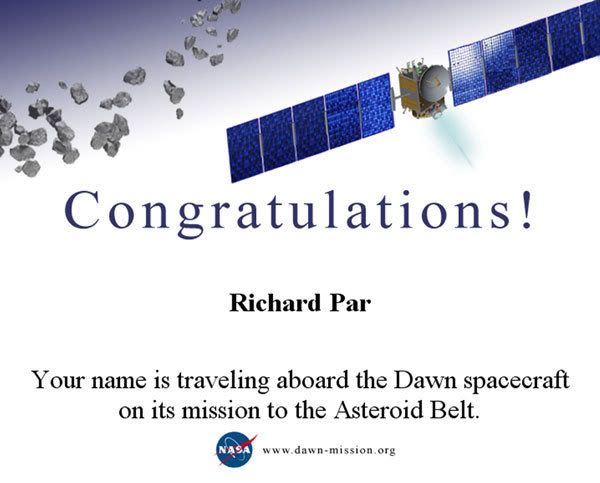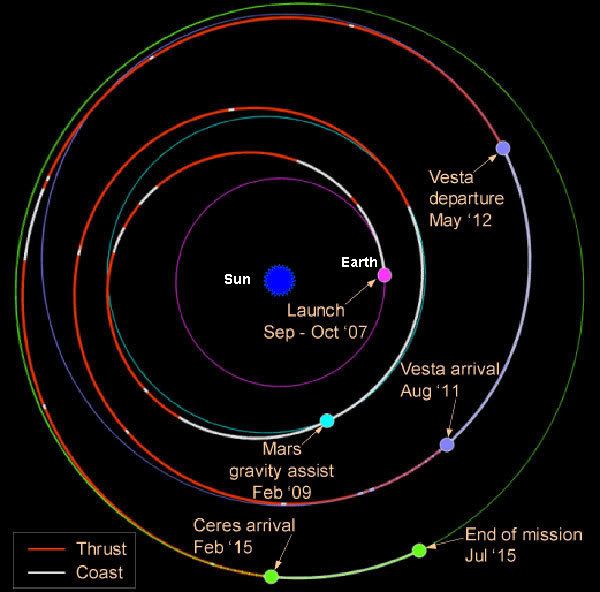
Tony Gray and Robert Murray for NASA / Carleton Bailie for United Launch Alliance
RISING WITH THE DAWN... FINALLY! After more than two years worth of setbacks...ranging from a brief cancellation by NASA due to technical problems in March of 2006 to liftoff being delayed two months because of, well, LOTS of issues (for starters, weather preventing fueling of one of its upper stage boosters days before it was suppose to launch in early July, and priority being given to send off a Mars-bound explorer last month), Dawn finally rocketed away from Florida around 4:34 AM, Pacific Daylight Time, today. The launch was actually delayed 14 minutes when a ship strolled into the restricted launch zone off the shores of Cape Canaveral. For the next couple of days (or weeks?), Dawn will be visible to residents living in Alaska and Hawaii who have decent telescopes and know where to look in the night sky. You can pinpoint the spacecraft’s location by going to this website, and change the TARGET BODY to "Dawn". Of course, as a catch, you also need to be a huge, huge nerd and know what the hell phrases such as "center geodetic" and "center radii" mean (I don’t...except for the radii part). So essentially, if you can’t figure out how to locate Dawn in space, tough luck. Actually, a NASA scientist working on this mission goes into nice detail in this article about where the probe will be right after launch. Check the last 6 paragraphs of his entry.

NASA JPL / George Shelton / UCLA
So those of you who actually read my Blogs are probably asking, "Why the hell are you talking about this, anyway (you geek)?" Well... As I stated lots of times before (I wrote far TOO MANY journal entries regarding this to link to here), Dawn is carrying a piece of hardware that contains an imprint showing that I’m onboard for the ride. Actually, it contains the imprints of 365,000 people who got to submit their names via the Internet from March of 2006 (right after NASA brought the mission back from cancellation) to November 4 of that same year. They are printed onto a silicon microchip, which is the size of an American 5-cent coin, shown below. I took the photo on the upper left-hand corner of this montage, during an "open house" that took place at NASA’s Jet Propulsion Laboratory in Pasadena, California, on May 19 of this year. The list of names next to that microchip were actually submitted for Dawn. That microchip is one of about three copies that were made, while the actual chip was installed onto the spacecraft in Florida two days earlier on May 17.


Granted, much of the info in this paragraph was mentioned in the NASA press release that I posted in this previous Blog, but that's okay. The image below shows the flight path Dawn will take on its 8-year, 3-billion-mile journey through the Asteroid Belt. Dawn’s first destination will be Mars in February of 2009...for a brief flyby that will allow the spacecraft to gain additional speed on its voyage to the asteroid Vesta. Dawn will arrive at Vesta in August of 2011 for a 6-month study. It will then head to the dwarf planet Ceres and reach it in February of 2015...for another half-year study. Then, assuming NASA doesn’t decide to send it to another asteroid to explore, Dawn will be left in orbit around Ceres...where it will remain for about 50 years. Will Dawn eventually enter and burn up in Ceres’ atmosphere? I don’t know. And I HOPE NOT. Of course, I won’t mind if NASA had another public outreach effort for a mission like New Horizons by then. The New Horizons spacecraft is currently headed for Pluto, with a compact disc bearing the names of more than 430,000 people onboard. New Horizons will eventually leave our Solar System...and head deep into the Milky Way Galaxy. Horizons, and those 430,000 names, will literally fly across the stars for the next millions or billions of years (unless it flies INTO a star or something). I know, I know... That was geeky AND sentimental.

Courtesy of The Planetary Society

No comments:
Post a Comment